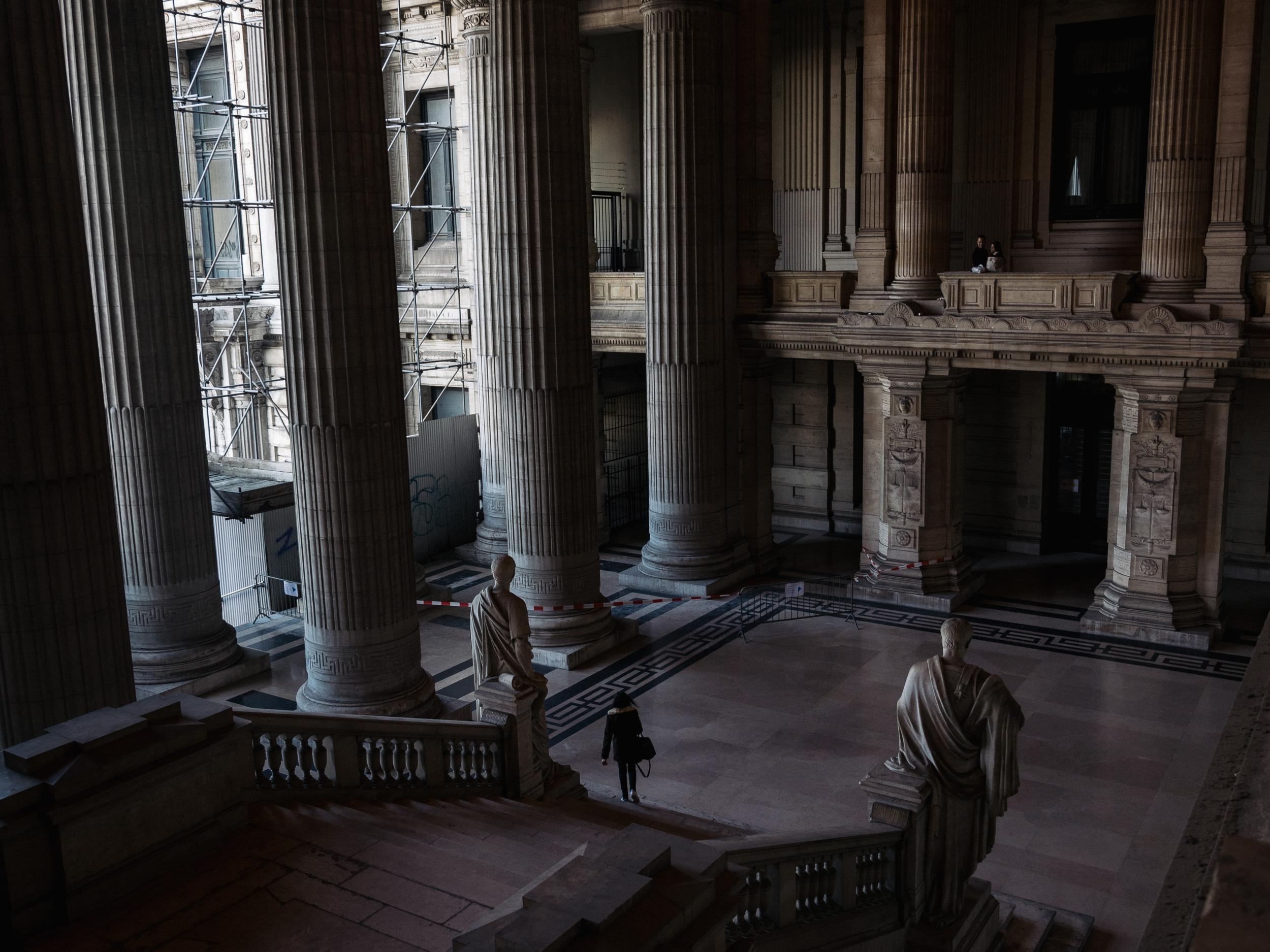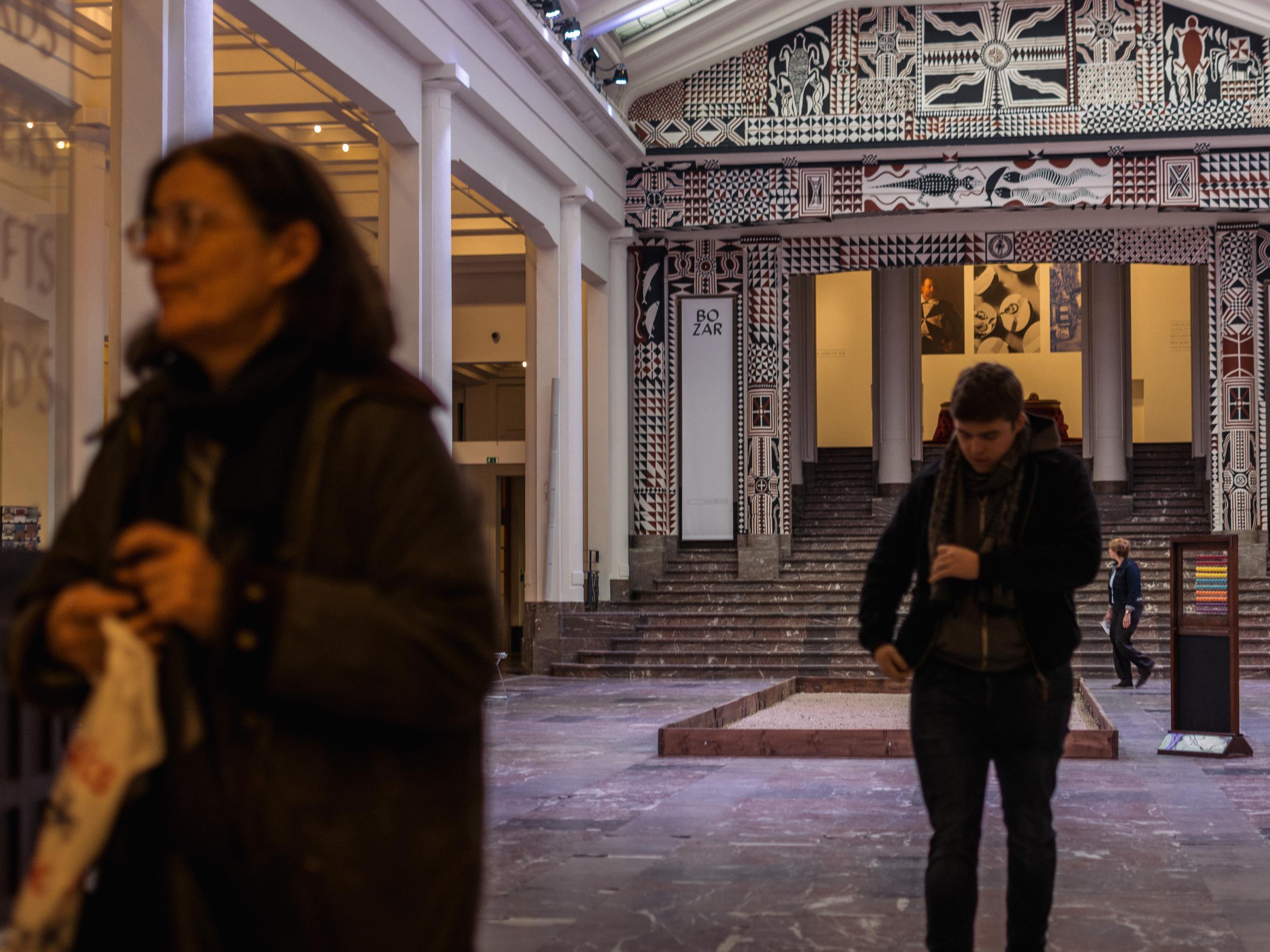Belgium's genocidal colonial legacy haunts the country’s future
As Belgium confronts the identity crisis of its disillusioned minorities and homegrown terrorism, its genocidal colonial legacy remains tucked away from the public discourse, confined to art, culture and religion

Your support helps us to tell the story
From reproductive rights to climate change to Big Tech, The Independent is on the ground when the story is developing. Whether it's investigating the financials of Elon Musk's pro-Trump PAC or producing our latest documentary, 'The A Word', which shines a light on the American women fighting for reproductive rights, we know how important it is to parse out the facts from the messaging.
At such a critical moment in US history, we need reporters on the ground. Your donation allows us to keep sending journalists to speak to both sides of the story.
The Independent is trusted by Americans across the entire political spectrum. And unlike many other quality news outlets, we choose not to lock Americans out of our reporting and analysis with paywalls. We believe quality journalism should be available to everyone, paid for by those who can afford it.
Your support makes all the difference.In June 1960 after 52 years of rule Belgium granted independence to its Congolese colony. “It is your job, gentlemen, to show that we were right in trusting you,” proclaimed King Baudouin, sealing Belgium’s parting grace with condescension.
One of history’s most brutal rulers, the 19th century Belgian King Leopold II, successfully transformed the entire Congo – a landmass that would stretch from the Baltic to the Black Sea into his private domain. From 1885 to 1908, loot flowed endlessly from the dark interior of the jungle, up the river Congo and into colonial Belgium.
Estimates of deaths in that period range from 10 million to 15 million Africans, and the debate whether it constituted a genocide continues.
Today, as then, little to none of the horrors are anywhere in sight in Belgium, with collective apathy and a stagnant education system preventing the country from confronting its role in Congo, more than a century in the past.

Culture and identity
Growing up in the Democratic Republic of the Congo, a country blinded from its colonial role, has left many Congolese Belgians struggling with their own identity.
“In Belgium, it was as if black people did not exist,” says Womba Konga, better known by his artist name Pitcho.
He is the organiser of music and arts festival Congolisation, which aims to connect ethnic Belgians and its Congolese minority. The festival has generated wide public support and included local politicians as guest speakers. “We didn’t want to confront only [white] Belgian [identity], but also African,” he says, speaking in sight of Leopold II statue, steps away from Brussels’ Congolese area.
The recent discourse on confederate statues in the US have prompted calls in Belgium to reevaluate its own colonial statues. The proposed Lumumba Place – named after the Congo’s independence leader who became it’s first president and but was then assassinated – appears on Google Maps, but isn’t recognised in Belgium, has become the kingpin in battles between activists and local government. To date, Brussels has not allowed for its official renaming.
“We can have Leopold statues and avenues, but not Lumumba Place, who was killed by Belgians and it’s not spoken about it here,” says Konga.

Overshadowed by the National Basilica on Brussels westernmost edge – where King Leopold II laid its first stone of construction – and tucked away in a quiet side street, a row of red-brick houses conceals a youth evangelic group. Inside, Stanislas Koyi, a maths university student from Congo, leads a small group of Congolese in French-language prayer.
Stanislas came to Belgium in 2007 when he was 15, to live with his relatives. After failing to adapt in a new country, he turned to the church.
“I met a priest in his late fifties, who was born in Congo – but he is a white Belgian. He understood me like no one else,” says Stanislas. “Our generation of Belgians are more willing to look back critically than the older ones – they’re too stubborn. We talk about it in [our evangelical] group too, but I never want to split them – I don’t want [Belgians] to look at their heritage only negatively.”
Congolese heritage at the core of the Royal Quarter
Bozar, the fine arts centre in Brussels’ Royal Quarter, has taken a firm role in confronting Belgium’s colonial heritage through culture. It hosts a dedicated Africa Desk, working to bring African art into Belgian mainstream
“There’s a big frustration in the Congolese community that they are not seen as part of anything in Belgium,” says Tony Van der Eecken, one of the figures behind the push from Bozar. “Using Bozar is a symbolic place to honour Congolese artists – it’s next to the royal palace, the cultural centre of the king.“
He has helped organise a number of Congo-related festivals and exhibitions, including Afropolitan – aiming “to present the best of contemporary artistic creations linked to Africa and its Diaspora in Europe” and Congo Art Works.
“The first there there was an exhibition on Congo curated by the Congolese was very confrontational, showing colonial times through their own eyes,” he says. “It was not that positive about the Belgians. It was a shock exhibition, it was good.”
He is sceptical whether time is in Belgium’s favour, pointing to the growing disillusionment of the widespread migrant population in the country. “We are one of the only Western countries that doesn’t have a street or a place dedicated to Lumumba,” he says.

Matonge, the Congolese area in Brussels
“Brussels is multicultural, but communities live on separate islands,” says Jeroen Marckelbach, coordinator of the Kuumba centre in Matonge, the historically Congolese area of Brussels. “The mayor of Ixelles has said it will clean up Matonge. We had police raiding our centre. We put an end to it eventually.”
Brussels has long been praised for its multiethnicity, which on the surface, seems to knit the colourful fabric of a cosmopolitan city together. Yet paradoxically, recent spate of terrorism stemming from Brussels highlighted some of its communities detachment.
In Matonge, Kuumba became the bridge in linking local guides with tour groups, in which Belgians are eager to explore to flavour- and colour-filled area, not bypassing the colonial legacy seeping within.
Bram Borloo, a Belgian activist and a painter, is also one of the local tour guides, helping span the knowledge gap. “In Belgium children learn that Leopold II was the ‘king constructor’, continuing to construct this false image,” he says.

Imperial buildings, as elsewhere in Europe, stand at the core of historic heritage, their heavy beauty masking the nature of its prerequisite wealth.
In 1899, Joseph Conrad immortalised the ghastly source of it with the book Heart of Darkness, later adapted by Francis Ford Coppola into the Vietnam film classic Apocalypse Now.
Louiza Cools, a woman in her forties, taking part in the tour, says: “Only after school through reading we learned the negative side of colonialism – taking part in this tour confirmed our knowledge.”
Much of the frustration among Belgians and the Congolese is directed towards flawed education, where to this day, the atrocities under the rule of King Leopold II are not addressed. Public discourse also promotes the view that Belgians had a civilising mission and purpose in Africa.
“Years ago the first students from Congo were very angry, because they had personal connections [to the atrocities],” says Geldof Annemiet, a teacher from a secondary school in Flemish Belgium. She believes more could be done to confront the history in classrooms. “Every teacher realises very well what we did there,” she says.
And as Belgium reels from the dozens dead following a spate of terror attacks, the Congolese are awaiting for Belgium to address its own reign of terror a century ago. But, according to Tony Van der Eecken, “there are a lot of Belgians who would like to forget the period”.
Join our commenting forum
Join thought-provoking conversations, follow other Independent readers and see their replies
Comments